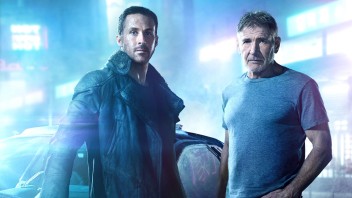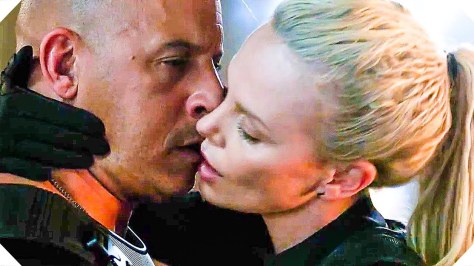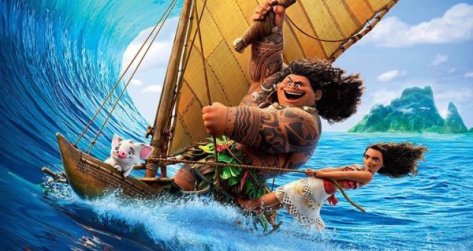By Maddie Scott
“At dawn in an outlying district of Warsaw, sunlight swarmed around the trunks of blooming linden trees and crept up the white walls of a 1930s stucco and glass villa where the zoo director and his wife slept in a bed crafted from white birch, a pale wood used in canoes, tongue depressors, and Windsor chairs.” So begins the Zookeeper’s Wife, a war story by Diane Ackerman, an acclaimed poet, essayist and naturalist. In the first sentence, it is clear that Ms. Ackerman is primarily a naturalist who likes to create sentences that have the same beauty in the words as the nature she is describing. The war story seems to at times have a secondary role in the Zookeeper’s Wife. For example, when describing the curfew the Poles were subject to under German occupation, Ackerman writes, “After curfew, Poles could no longer stroll under a canopy of stars.” This paragraph continues with a detailed explanation of meteor showers, including description and history, with only cursory mention of the Poles who could still watch such showers from balconies or windows, and a brief comparison of meteors to German gunfire and bombs.
The reason this works for some readers is that Diane Ackerman seems to be a kindred spirit of sorts with the main character in the book, Antonina Zabinski, the Zookeeper’s Wife. Antonina had the same connection with nature that Ms. Ackerman has. As the author writes,“Antonina loved to slip out of her human skin for a while and spy on the world through each animal’s eyes, and she often wrote from that outlook, in which she intuited their concerns and know-how, including what they might be seeing, feeling, fearing, sensing, remembering.” Their residence at the Zoo, the Villa, was home to many animals that participated in family life, including a badger, rabbit and hamster.

Amidst the descriptions of nature, Antonina and Jan’s (her husband) zoo animals and family, Ackerman weaves in the story of occupied Warsaw, her own family’s fight for survival (Antonina left the Zoo and the Villa more than once with her young son during particularly dangerous times of bombing and fighting), and the remarkable resistance efforts that she and her husband participated in. Jan was part of the Home Army and took part in the Warsaw Polish Uprising. His connection with a Jewish entomologist, Szymon Tenenbaum, who left his collection of insects at the Villa for safekeeping when he was forced from his home, opened the doors to the Ghetto (the Polish director of the Warsaw Ghetto’s Labor Bureau had a mutual admiration for Tenenbaum and his collection of insects) and Jan was able to help many Jewish friends and strangers escape. Many of these people took up temporary (and some more semi-permanent) residence at the Villa. All told, the Zabinskis helped to save approximately 300 Jews. Antonina demonstrated the same strength, compassion and resolve in helping their Jewish “guests” as she did in keeping her family safe.
The Zoo itself went through many changes during the war. Many animals were killed during the first days of bombing in Warsaw, and many more were moved by the “benevolent” Lutz Heck, the director of the Berlin Zoo, and a Nazi, who tried to convince Antonina that he had the animals’ best interest in mind (while later taking a hunting party back to the Warsaw Zoo to kill remaining animals). After the war, Antonina and Jan restore the Warsaw Zoo, before Jan’s retirement from the Zoo in 1951.
Ackerman shows great skill in representing the Zookeeper’s wife’s strengths. In the concluding chapter, she relays Jan’s quotes via Danka Narnish, an Israeli reporter, “Her confidence could disarm even the most hostile. It wasn’t just that she identified with them, but from time to time she seemed to shed her own human traits and become a panther or hyena. Then, able to adopt their fighting instinct, she arose as a fearless defender of her kind.”
The movie adaptation of the Zookeeper’s Wife is visually appealing, and it is easier to follow the comings and goings of the Jews that the Zabinski’s save, rather than in the book with its heavy description and seemingly non-linear timeline. Antonina, played by Jessica Chastain, convincingly conveys her love for the people she saves, animals, and her son. Her love for her husband, however, is clouded by a fictionalized romance between her and Lutz Heck, played by Daniel Bruhl. The movie takes evidence of Lutz’ admiration of Antonina from the book and turns it into a mutual attraction, much of which the movie is based upon. Antonina is also portrayed as soft-spoken and unsure of herself. Despite the great things she accomplishes in helping Jews to escape the Warsaw ghetto by giving them shelter in her house, the sense that the audience gathers from the movie is that she is overly emotional, tempted romantically by a Nazi who in the book she is clearly wary of from the beginning, and not an equal partner to her husband. The movie also takes great artistic license in portraying a young Jewish woman who was taken in by the Zabinskis after being brutally raped by Germans in the Ghetto. While such atrocities certainly happened again and again during the war, this character is created for the movie, and not mentioned in the book.
If one wants to learn of the remarkable story of Antonina Zabinski and to get a more accurate representation, it is far better to read the book than to see the movie.



 nature of the family unit. We declare to the world the value and importance of family life, but much of the confusion and difficulty we find existing in the world today is being traced to the deterioration of the family. Home experiences where children are taught and trained by loving parents are diminishing.” One Disney movie that strongly emphasizes family is Lilo and Stitch. “Ohana means family. Family means nobody gets left behind or forgotten.” This line was made famous by Stitch who was adopted by Lilo’s family.
nature of the family unit. We declare to the world the value and importance of family life, but much of the confusion and difficulty we find existing in the world today is being traced to the deterioration of the family. Home experiences where children are taught and trained by loving parents are diminishing.” One Disney movie that strongly emphasizes family is Lilo and Stitch. “Ohana means family. Family means nobody gets left behind or forgotten.” This line was made famous by Stitch who was adopted by Lilo’s family.
 Harrison Ford, widely recognized as one of those actors who just won’t ride into the sunset. That is of course to the exception to his ever long-lasting desire to get out of the Star Wars movies. Ford was in the first Blade Runner back in 1982 and is very excited to be back on the big screen playing a character that he hasn’t visited in nearly 30 years.
Harrison Ford, widely recognized as one of those actors who just won’t ride into the sunset. That is of course to the exception to his ever long-lasting desire to get out of the Star Wars movies. Ford was in the first Blade Runner back in 1982 and is very excited to be back on the big screen playing a character that he hasn’t visited in nearly 30 years. knowing the plot, characters, or theme of the movie. The character progression of Harrison Ford’s character will be something to keep an eye out for and will electrify movie theaters all across the country.
knowing the plot, characters, or theme of the movie. The character progression of Harrison Ford’s character will be something to keep an eye out for and will electrify movie theaters all across the country.
 can be traced back to
can be traced back to  son, reminding him of the wonderful support family offers. Despite the influence of Cipher’s team, he reunites with the family reclaiming the satisfaction that brings. Toretto’s family still welcomes him despite his sins. “You don’t turn back on your family, even when they do” Toretto utters in “Fast and Furious Six.” He thanks family members for their foregiveness.
son, reminding him of the wonderful support family offers. Despite the influence of Cipher’s team, he reunites with the family reclaiming the satisfaction that brings. Toretto’s family still welcomes him despite his sins. “You don’t turn back on your family, even when they do” Toretto utters in “Fast and Furious Six.” He thanks family members for their foregiveness.
 the warning signs that you can look for in someone who is contemplating harming themselves. This story is phenomenally written and brilliantly directed.” Leishman, who also attempted suicide in high school added, “I have heard a lot of speculation that this story is ‘unrealistic’ and for some it may be, but to me this felt like I was watching a TV series of my high school years on Netflix and it was extremely real.”
the warning signs that you can look for in someone who is contemplating harming themselves. This story is phenomenally written and brilliantly directed.” Leishman, who also attempted suicide in high school added, “I have heard a lot of speculation that this story is ‘unrealistic’ and for some it may be, but to me this felt like I was watching a TV series of my high school years on Netflix and it was extremely real.” and the affects it has on families who deal with it. In an article produced by the Church, they write, “Suicide is a global public health issue that can often be prevented. While it is a complex situation with no single cause, the risks can be reduced when family, friends, ward members, and mental health professionals come together to help those who are struggling. Everyone can play a role in suicide prevention and should learn the risk factors and warning signs.”
and the affects it has on families who deal with it. In an article produced by the Church, they write, “Suicide is a global public health issue that can often be prevented. While it is a complex situation with no single cause, the risks can be reduced when family, friends, ward members, and mental health professionals come together to help those who are struggling. Everyone can play a role in suicide prevention and should learn the risk factors and warning signs.”

 perspective, there’s continuity of emotion— laughing, then sadness, and optimal tension appropriate for children. It personifies various parts of the earth, as does Hawaiian belief. You see a sassy and loving side of the ocean, the earth’s anger at its mistreatment, and its gratitude when honored with love and respect.
perspective, there’s continuity of emotion— laughing, then sadness, and optimal tension appropriate for children. It personifies various parts of the earth, as does Hawaiian belief. You see a sassy and loving side of the ocean, the earth’s anger at its mistreatment, and its gratitude when honored with love and respect.
 conquers-doubt story is difficult to pull off. Take Dateline and 20/20, the accused are inevitably guilty, or at least convicted. The film is less successful as a crime story than a psychological examination of
conquers-doubt story is difficult to pull off. Take Dateline and 20/20, the accused are inevitably guilty, or at least convicted. The film is less successful as a crime story than a psychological examination of  Inspector
Inspector 
 expressed overall satisfaction toward the movie, praising “spectacular” animation and “vibrant color.” Audience members liked the “innovative” story. Others expressed pride in Polynesian traditions: “Well, I figured out why the ocean didn’t just get the heart over to Te Fiti (the goddess of islands)? The answer to that is simple … it was necessary for both Moana and Maui to grow from the journey. Life is about growth. Our ancestors and the elements know this too.” A “personal growth” message was grasped by several audience members.
expressed overall satisfaction toward the movie, praising “spectacular” animation and “vibrant color.” Audience members liked the “innovative” story. Others expressed pride in Polynesian traditions: “Well, I figured out why the ocean didn’t just get the heart over to Te Fiti (the goddess of islands)? The answer to that is simple … it was necessary for both Moana and Maui to grow from the journey. Life is about growth. Our ancestors and the elements know this too.” A “personal growth” message was grasped by several audience members. majority, however, liked Disney’s depiction, arguing his accomplishments were conveyed. The “lighthearted portray” fit well with Maui’s trickster role. In fact, several Islanders agreed that a “built” and “big” appearance was an appropriate description of Maui. One said, “Maui has multiple descriptions throughout Polynesia and even within a Polynesian group. History was maintained orally and has not preserved a single detailed Maui description.” Few said Disney fabricated the Maui story. Musker and Celements depict a combination of South Pacific cultures in “Moana”, instead of just one (as seen in “Lilo and Stitch”). Fijian, Samoan, Tahitian, and other Oceanic cultures are synthesized. How do the audiences thought about such mingling of cultures in the movie?
majority, however, liked Disney’s depiction, arguing his accomplishments were conveyed. The “lighthearted portray” fit well with Maui’s trickster role. In fact, several Islanders agreed that a “built” and “big” appearance was an appropriate description of Maui. One said, “Maui has multiple descriptions throughout Polynesia and even within a Polynesian group. History was maintained orally and has not preserved a single detailed Maui description.” Few said Disney fabricated the Maui story. Musker and Celements depict a combination of South Pacific cultures in “Moana”, instead of just one (as seen in “Lilo and Stitch”). Fijian, Samoan, Tahitian, and other Oceanic cultures are synthesized. How do the audiences thought about such mingling of cultures in the movie? Disney’s inclusion of “all the islands” was lauded. A Pacific Islander said, “It’s difficult to tell the different cultures,” while several participants found the mixing “all too jumbled,” making it hard to follow the story. Several were surprised to find a “strong Samoan influence.” Perhaps this is because Samoa is one of the few islands allowing women to have the chiefly title. One viewer recognized the “twist of legends and customs” compared to their own island versions. Knowing the Moana role in her island, one responded, “Women don’t take the responsibility of providing and protecting in Polynesia, but maybe Moana is based on some Tahitian myth or legend.” Some sensed favoritism in the choice of culture. “I don’t like how (the movie) was only Samoan and Tahitian-based. Maui is a Polynesian demigod, but the movie only displayed him as only a few.”
Disney’s inclusion of “all the islands” was lauded. A Pacific Islander said, “It’s difficult to tell the different cultures,” while several participants found the mixing “all too jumbled,” making it hard to follow the story. Several were surprised to find a “strong Samoan influence.” Perhaps this is because Samoa is one of the few islands allowing women to have the chiefly title. One viewer recognized the “twist of legends and customs” compared to their own island versions. Knowing the Moana role in her island, one responded, “Women don’t take the responsibility of providing and protecting in Polynesia, but maybe Moana is based on some Tahitian myth or legend.” Some sensed favoritism in the choice of culture. “I don’t like how (the movie) was only Samoan and Tahitian-based. Maui is a Polynesian demigod, but the movie only displayed him as only a few.”
 are fans of classic films will take notice of the many clips from among the 285 movies that Australian born Kelly has designed including Casablanca, Some Like It Hot, Auntie Mame, and Oklahoma. He left his small seaside village in the early 1920’s for New York City and landed in Greenwich Village and the bohemian lifestyle of an artist who hand painted ties to make ends meet. He got a toe hold on Broadway, which led to his first costume designing jobs for the lavish musicals popular at the time. He moved to Hollywood to be a part of the burgeoning film industry. He was hired by the Warner Brothers Studio and began living a lavish lifestyle.
are fans of classic films will take notice of the many clips from among the 285 movies that Australian born Kelly has designed including Casablanca, Some Like It Hot, Auntie Mame, and Oklahoma. He left his small seaside village in the early 1920’s for New York City and landed in Greenwich Village and the bohemian lifestyle of an artist who hand painted ties to make ends meet. He got a toe hold on Broadway, which led to his first costume designing jobs for the lavish musicals popular at the time. He moved to Hollywood to be a part of the burgeoning film industry. He was hired by the Warner Brothers Studio and began living a lavish lifestyle. the scenes details about costume choices for a litany of stars during the golden age of Hollywood, such as Bette Davis, Greta Garbo, Barbara Stanwyck, Angela Lansbury, Ingrid Bergman, Marilyn Monroe, Katharine Hepburn, and Jane Fonda. Orry-Kelly possessed a masterful eye for choosing colors, draping fabric, and disguising the figure flaws and assets of the starlets who became his friends. His personal life as an out of the closet gay man had its share of drama during a time when that was expected to be kept hidden. His early co-habitation with Cary Grant was a carefully guarded secret even in his autobiography. Grant played by the Hollywood rules and requested that their liaison not be written about and Kelly obliged. Grant was a pallbearer at Kelly’s funeral in 1954. The years of his life 1897-1954 provide a time capsule that illuminates Hollywood in its hay days. Interviews include
the scenes details about costume choices for a litany of stars during the golden age of Hollywood, such as Bette Davis, Greta Garbo, Barbara Stanwyck, Angela Lansbury, Ingrid Bergman, Marilyn Monroe, Katharine Hepburn, and Jane Fonda. Orry-Kelly possessed a masterful eye for choosing colors, draping fabric, and disguising the figure flaws and assets of the starlets who became his friends. His personal life as an out of the closet gay man had its share of drama during a time when that was expected to be kept hidden. His early co-habitation with Cary Grant was a carefully guarded secret even in his autobiography. Grant played by the Hollywood rules and requested that their liaison not be written about and Kelly obliged. Grant was a pallbearer at Kelly’s funeral in 1954. The years of his life 1897-1954 provide a time capsule that illuminates Hollywood in its hay days. Interviews include 
 emergency landing of the airliner by Captain
emergency landing of the airliner by Captain 